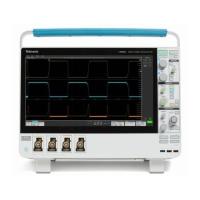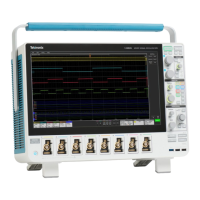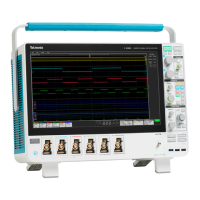Status and Events
The oscilloscope provides a status and event reporting system for the Ethernet
and USB interfaces. This system informs you of certain significant events that
occur within
the oscilloscope.
The oscilloscope status handling system consists of five 8-bit registers and two
queues for e
ach interface. The remaining Status subtopics describe these registers
and components. They also explain how the event handling system operates.
Registers
Overview
The registers in the event handling system fall into two functional groups:
Status R
egisters contain information about the status of the oscilloscope.
They include the Standard Event Status Register (SESR).
Enable
Registers determine whether selected types of events are reported to
the Status Registers and the Event Queue. They include the Device Event
Status Enable Register (DESER), the Event Status Enable Register (ESER),
and the Service Request Enable Register (SRER).
Status Registers
The Standard Event Status Register (SESR) and the Status Byte Register (SBR)
record certain types of events that may occur while the o scilloscope is in use.
IEEE Std 4 88.2-1987 defines these registers.
Each bit in a Status Register records a particular type of e vent, such as an execution
error or message available. When an event of a given type occurs, the oscilloscope
sets the b it that represents that type of event to a value of one. (You can disable
bits so that they ignore events and remain at zero. See Enable Registers). Reading
th
e status registers tells you what types of e vents have occurred.
The Standard Event Status Register (SESR). The SESR records eight types of
events that can occur within the oscilloscope. Use the *ESR? query to read the
SESR register. Reading the register clears the bits of the register so that the
register can accumulate information about new events.
NOTE. TekVISA applications use S ESR bit 6 to respond to any of several events,
including some front panel actions.
Figure 3-1: The Standard Event Status Register (SESR)
MSO54, MSO56, MSO58, MSO58LP Programmer 3-1

